Abstract
Summary of Literature Review
Sacral stress fractures rarely develop after lumbosacral fusion, and osteoporosis, female sex, being over 60 years old, and long segment fusion are known risk factors.
Materials and Methods
A 66-year-old woman with spondylolisthesis at L5 on S1 underwent posterior lumbar interbody fusion and posterior instrumentation. A sacral stress fracture was found 4 weeks after the first operation, and we performed posterior reduction and posterior instrumentation with S2 alar screws.
REFERENCES
1. Odate S, Shikata J, Kimura H, et al. Sacral fracture after instrumented lumbosacral fusion: analysis of risk factors from spinopelvic parameters. Spine (Phila Pa 1976). 2013 Feb; 38(4):E223–9. DOI: 10.1097/BRS.0b013e31827dc000.
2. Klineberg E, McHenry T, Bellabarba C, et al. Sacral insufficiency fractures caudal to instrumented posterior lumbosacral arthrodesis. Spine (Phila Pa 1976). 2008 Jul; 33(16):1806–11. DOI: 10.1097/BRS.0b013e31817b8f23.

3. Papadopoulos EC, Cammisa FP Jr, Giradi FP. Sacral fractures complicating thoracolumbar fusion to the sacrum. Spine (Phila Pa 1976). 2008 Sep; 33(19):E699–707. DOI: 10.1097/BRS.0b013e31817e03db.

4. Gotis-graham I, McGuigan L, Diamond T, et al. Sacral insufficiency fractures in the elderly. J Bone Joint Surg Br. 1994 Nov; 76(6):882–6.

5. Vavken P, Krepler P. Sacral fractures after multi-segmental lumbosacral fusion: a series of four cases and systematic review of literature. Eur Spine J. 2008 Sep; 17(2 Suppl):S285–90. DOI: 10.1007/s00586-007-0579-4.

6. Mathews V, McCance SE, O'Leary PF. Early fracture of the sacrum or pelvis: an unusual complication after multilevel instrumented lumbosacral fusion. Spine (Phila Pa 1976). 2001 Dec; 26(24):E571–5. DOI: 10.1097/00007632-200112150-00027.
7. Scemama C, D'astorg H, Guigui P. Sacral stress fracture after lumbar and lumbosacral fusion. How to manage it? A proposition based on three cases and literature review. Orthop Traumatol Surg Res. 2016 Apr; 102(2):261–8. DOI: 10.1016/j.otsr.2015.11.012.

8. Etebar S, Cahill DW. Risk factors for adjacent-segment failure following lumbar fixation with rigid instrumentation for degenerative instability. J Neurosurg. 1999 Apr; 90(2 Suppl):163–9. DOI: 10.3171/spi. 1999.90.2.0163.

9. Lehmann TR, Spratt KF, Tozzi JE, et al. Long-term followup of lower lumbar fusion patients. Spine (Phila Pa 1976). 1987 Mar; 12(2):97–104. DOI: 10.1097/00007632-198703000-00004.

10. Lafage V, Schwab F, Patel A, et al. Pelvic tilt and truncal inclination: two key radiographic parameters in the setting of adults with spinal deformity. Spine (Phila Pa 1976). 2009 Aug; 34(17):E599–606. DOI: 10.1097/BRS.0b013e3181aad219.
Fig. 1.
Preoperative plain radiographs: (A) standing (lateral view), (B) flexion, and (C) extension (lateral view). The radiographs show spondylolisthesis at L5 on S1 with instability and a neglected L1 spine compression fracture.
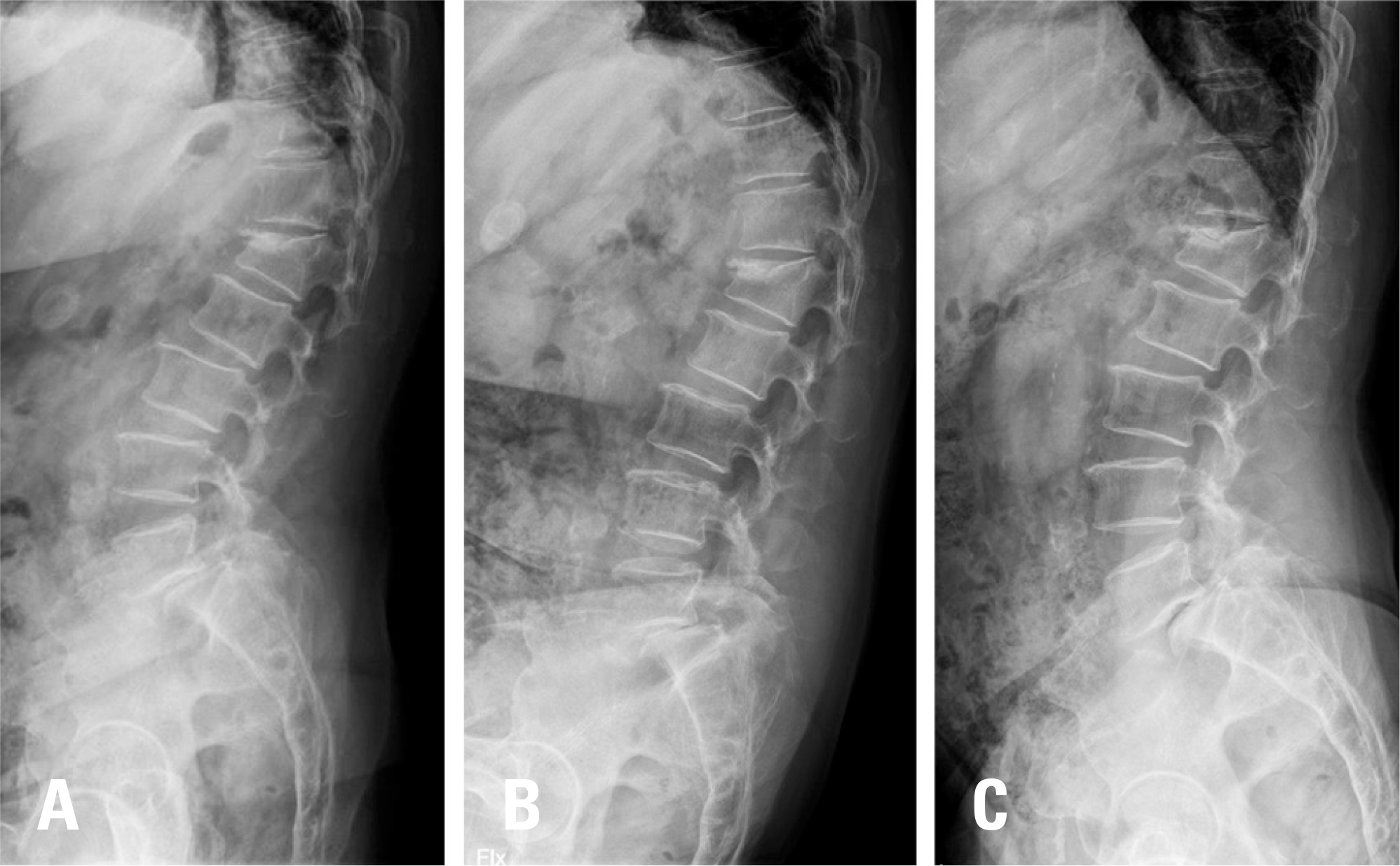
Fig. 2.
Postoperative plain lateral radiograph shows the post-reduction state of spondylolisthesis at L5-S1.
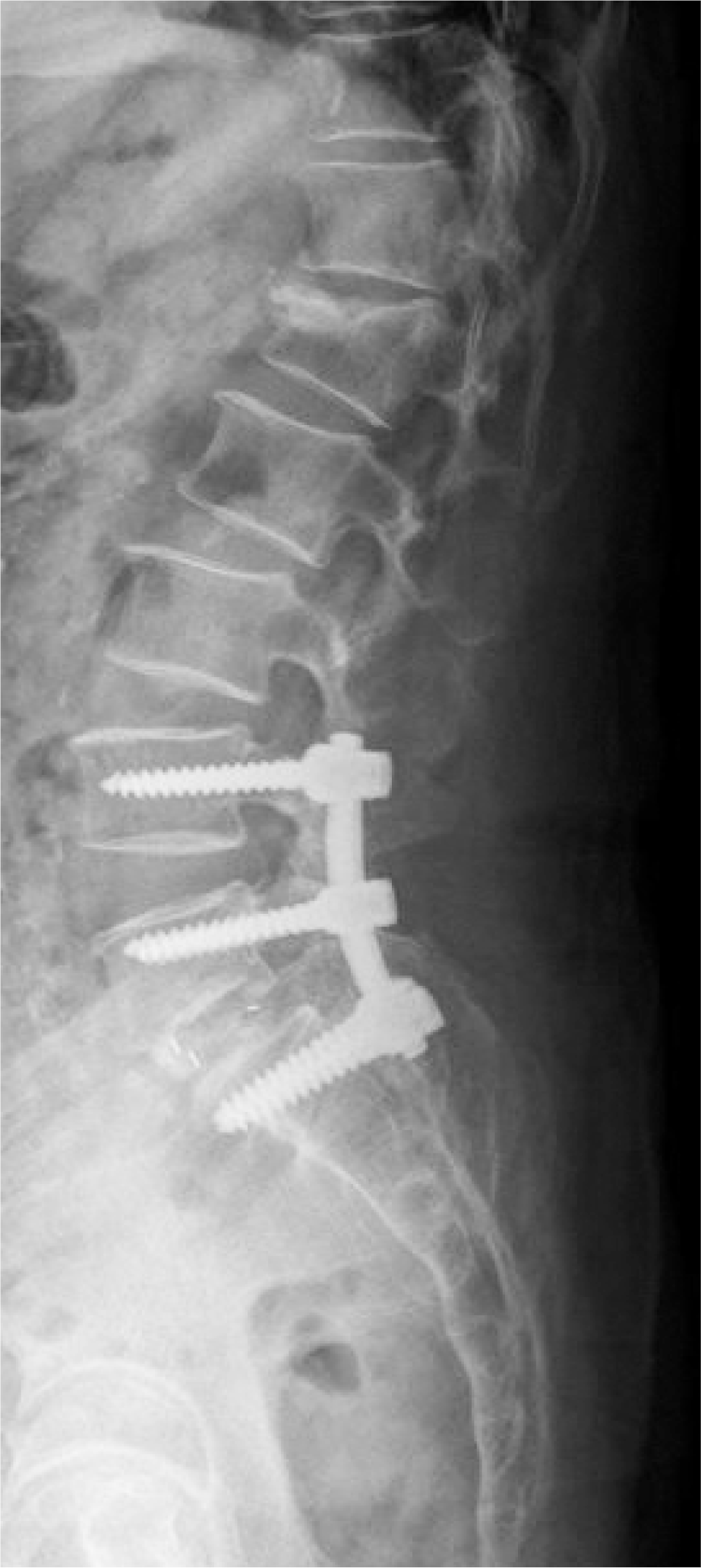
Fig. 3.
Plain lateral radiograph taken 4 weeks after the first operation shows a displaced sacral stress fracture just beneath the S1 pedicle screws.
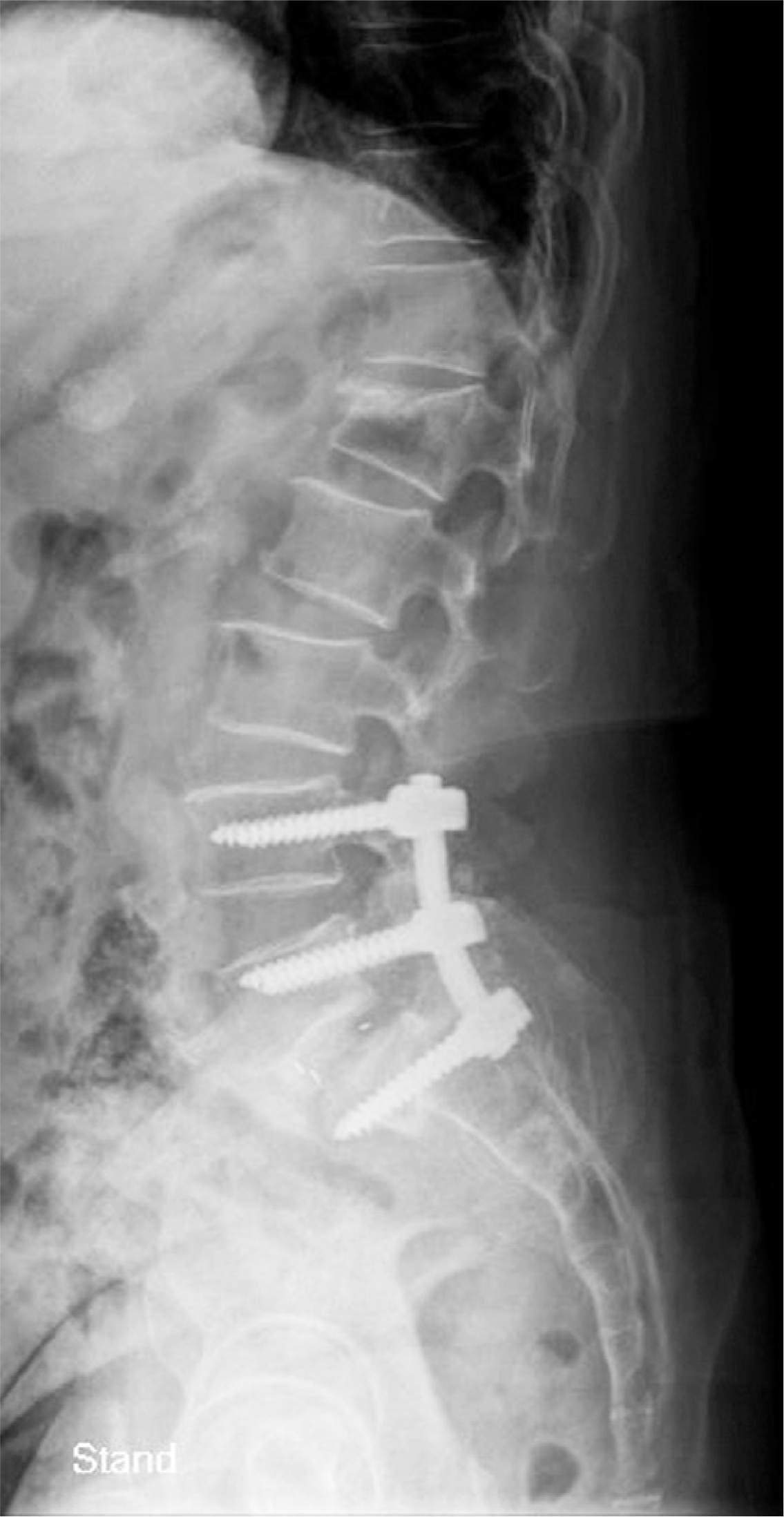
Fig. 4.
(A) Sagittal and (B) axial computed tomography images taken 4 weeks after the first operation show a displaced sacral stress fracture just beneath the S1 pedicle screws.
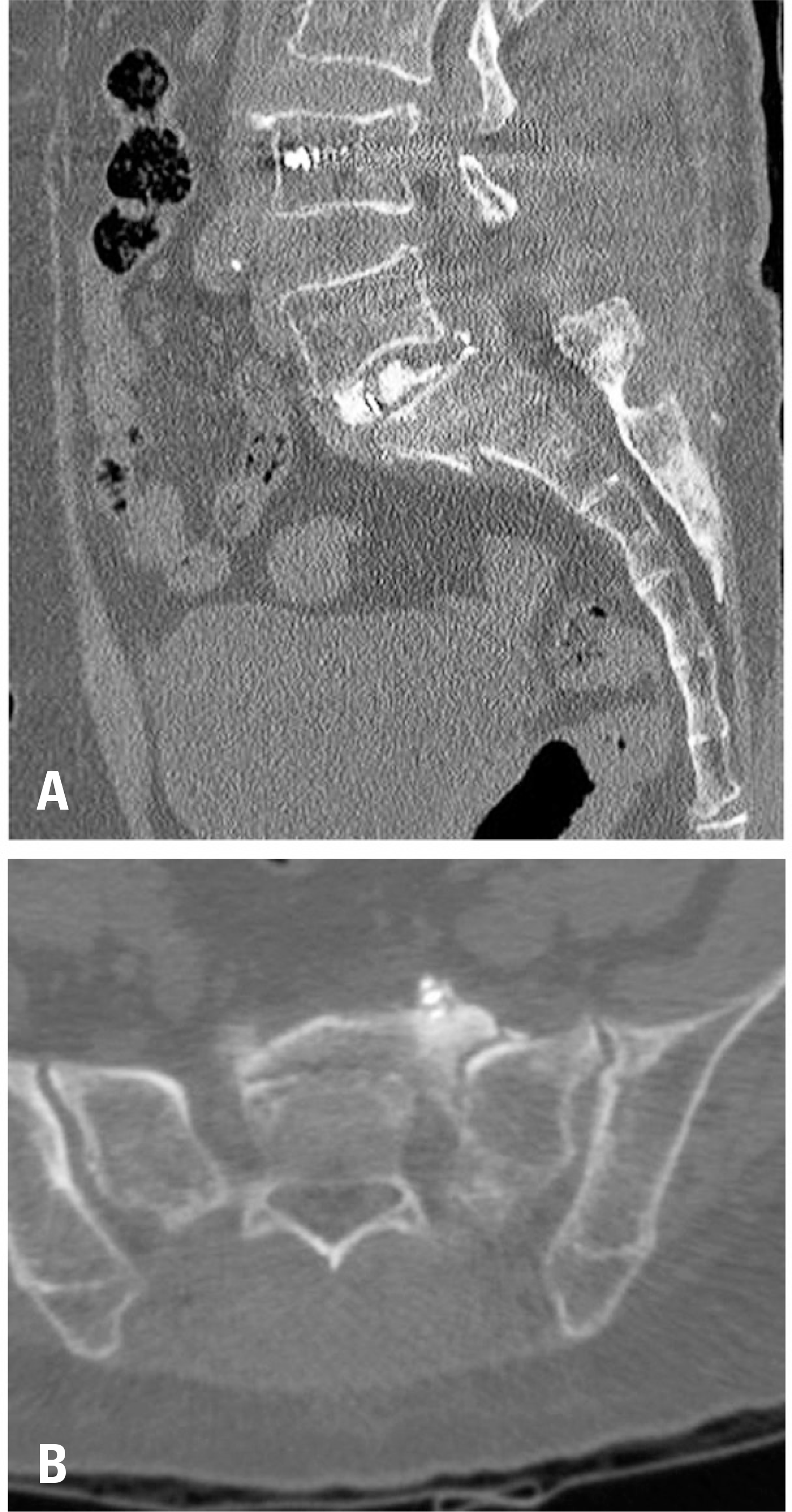
Fig. 5.
Plain lateral radiograph taken after the second operation shows the well-reduced state of the sacral stress fracture.
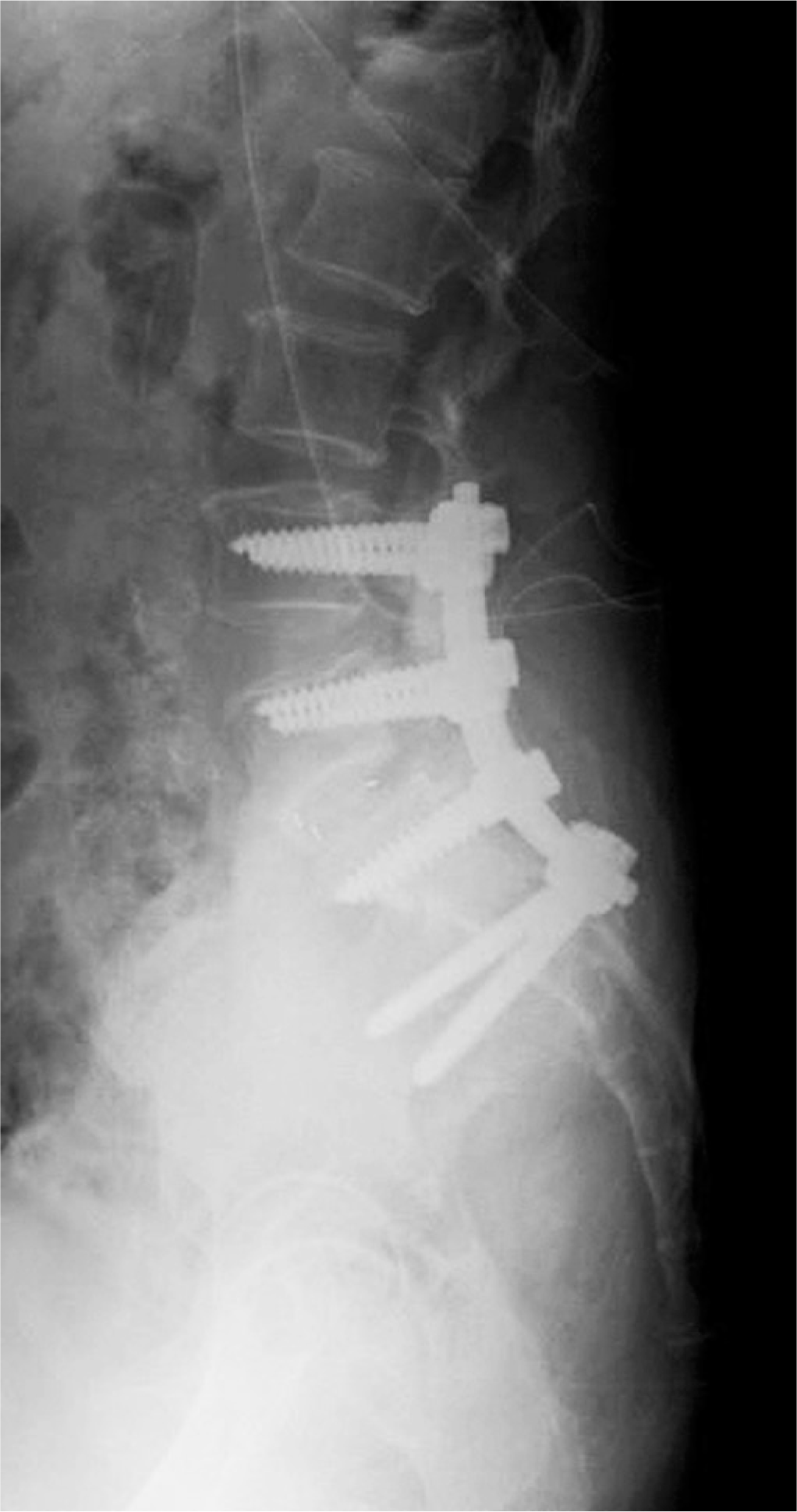




 PDF
PDF ePub
ePub Citation
Citation Print
Print


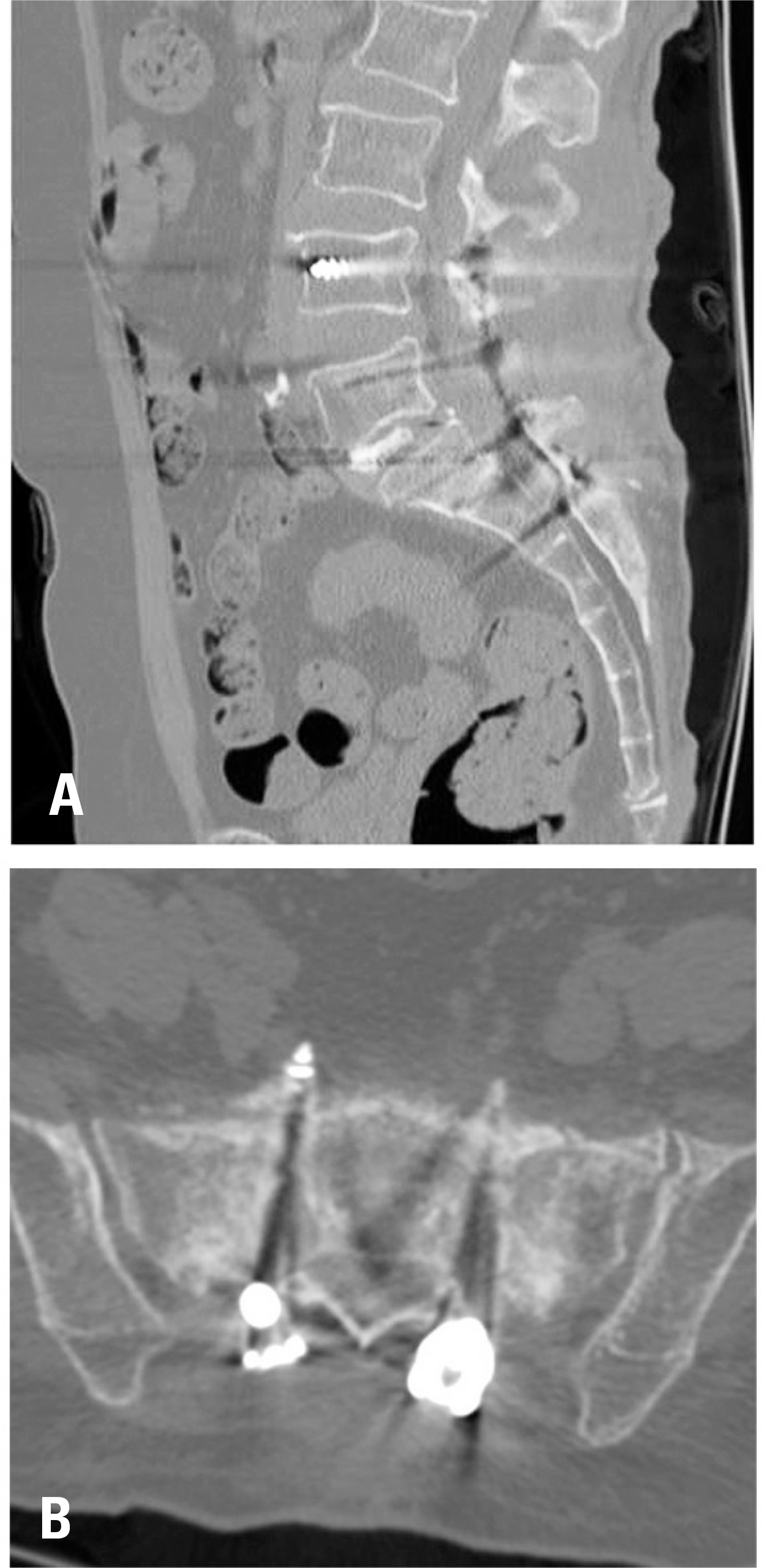
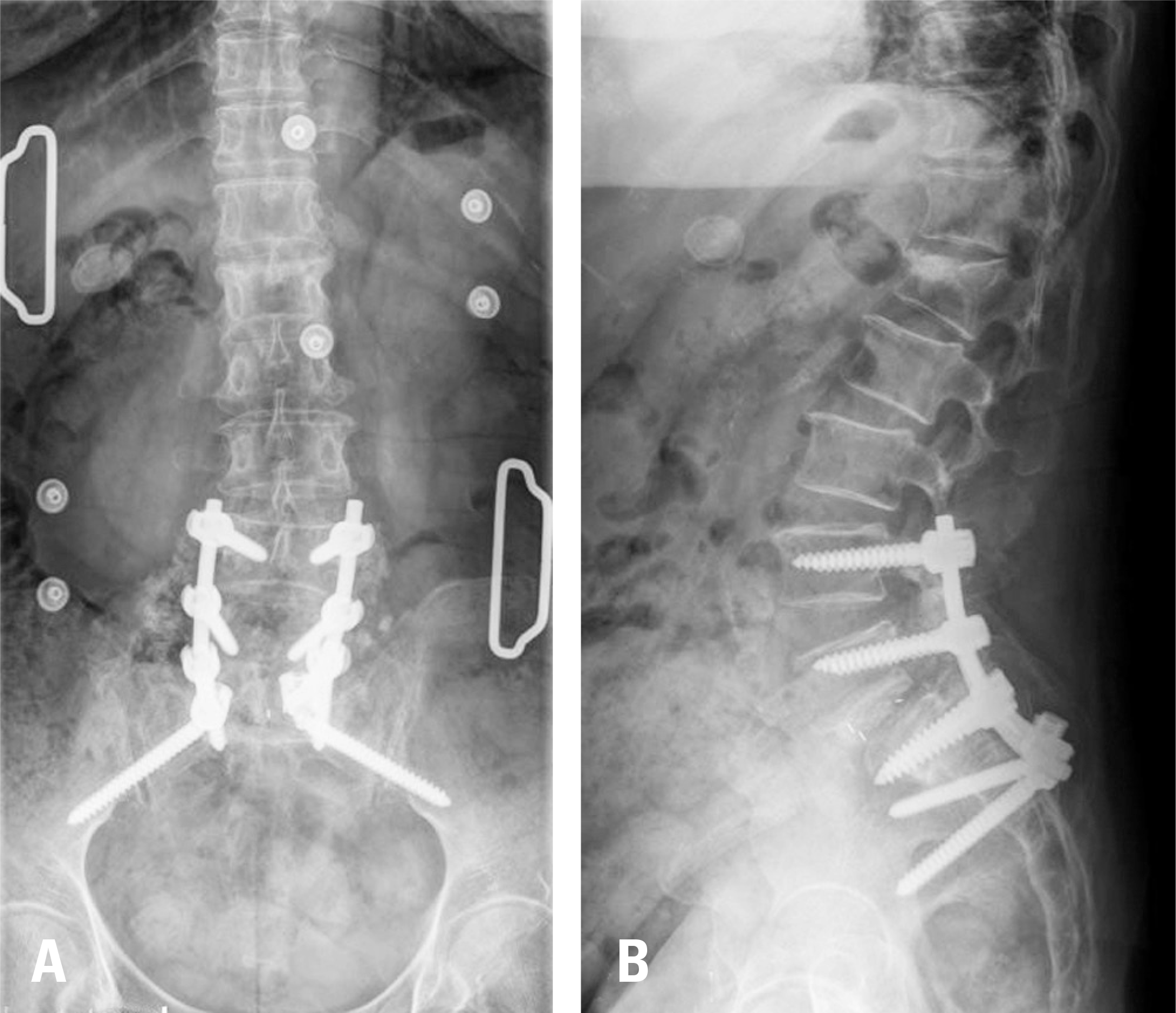
 XML Download
XML Download